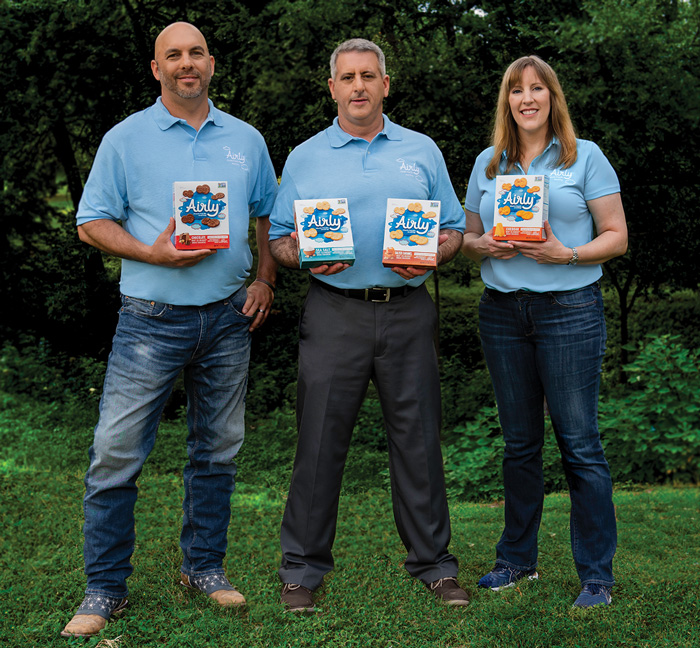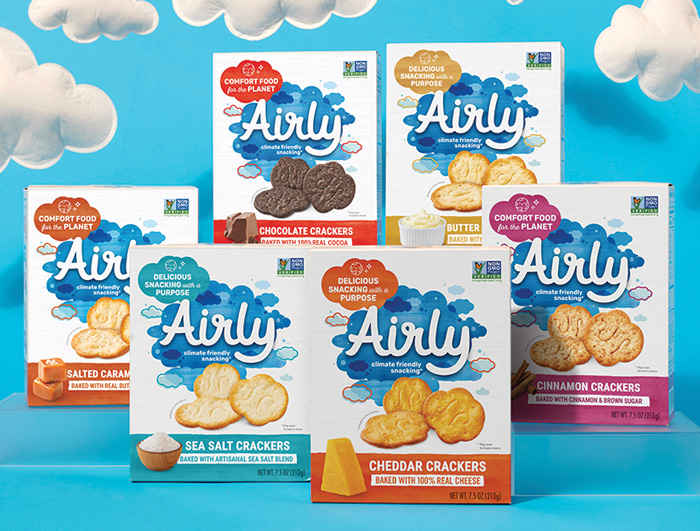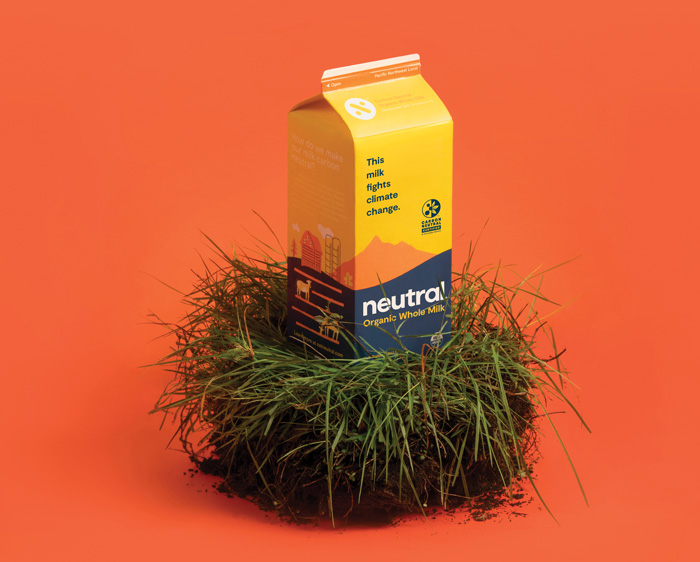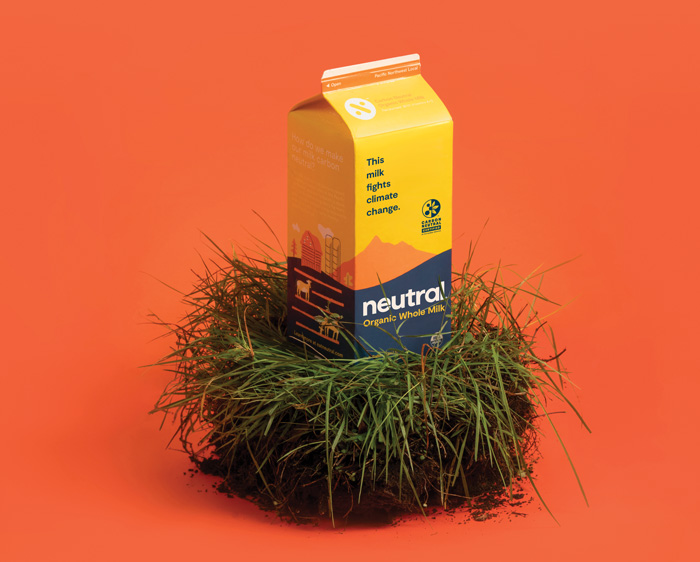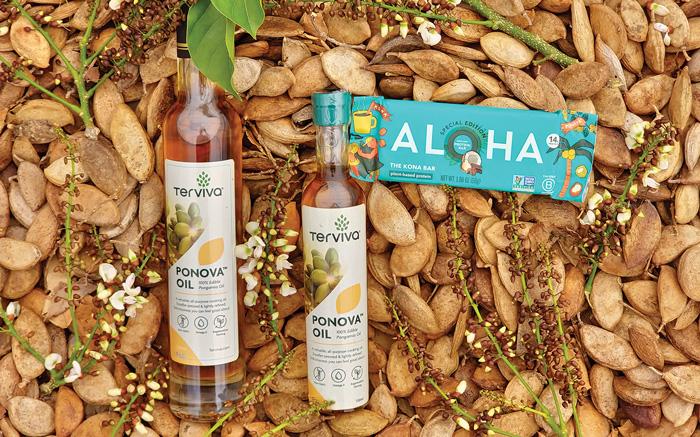
Can Food Brands Help Reverse Climate Change?
Despite the risk of greenwashing allegations, food companies are tackling multifaceted initiatives to shrink their carbon footprints. Will consumers get it, and how much does it really matter to them?
Article Content
Like many food brands these days, Airly snack crackers are the result of a passion project. Creating Airly—one of the first explicitly “climate-friendly” brands on U.S. grocery shelves—involved two experienced executives at Post Holdings, Jennifer McKnight and Mark Izzo, who wanted to advance the industry beyond the vague sustainability positioning that has held sway in better-for-you marketing for two decades.
As two of the three co-founders of Bright Future Foods, a subsidiary of Post Holdings, “Mark and I were hired to go out and disrupt food and beverage,” recalls McKnight, who previously had worked at Clorox, helped run a protein brand startup, and served as innovation chief for a pet food brand. Izzo, who has a PhD in food science and nutrition, was head of innovation for Post before he left to become R&D chief for Pinnacle Foods; then he came back to Post as chief disruption officer and CEO of Bright Future Foods. A third cofounder, Kristopher Corbin, who is the chief supply chain officer, rounds out the leadership team.
“We lucked out that the technology of ‘carbon farming’ was to the place where commercialization was a reality,” says McKnight, who is Airly’s chief marketing officer. “And so we asked a pretty simple question: What if, instead of being less bad in terms of contributing to greenhouse gases, we could create a food that healed? When we started the journey, we weren’t sure.”
But sure enough, Bright Future is promising that consumption of a 7.5-ounce box of Airly Crackers removes from 18 to 21 grams of carbon from the air, according to package claims. Yet to do their small part for rolling back climate change, Airly charges American consumers only about $3.50 a box, a price point in line with other crackers.
Airly is part of a flurry of new initiatives by both big food companies and small enterprises to use products and marketing to demonstrate their seriousness about reducing greenhouse gas emissions and embracing environmental sustainability.
“If consumers are going to buy a cookie and have the choice of buying one that aspires to do it a different way and those decisions influence suppliers and plants, then that has a positive impact,” says consultant Chris Gaffney, a former supply chain vice president with Coca-Cola. “More consumers are understanding that if they’re buying a physical good, the raw material comes from someplace.”
But companies that position their products as climate-friendly risk being accused of “greenwashing,” a charge levied by those who question the effectiveness and authenticity of such moves. Count Marion Nestle, New York University professor emerita of nutrition, food studies, and public health, among the skeptics.
“It’s greenwashing for the most part,” contends Nestle. “Meantime, these brands are not even talking about health or junk foods anymore. All of it is environmental. And there’s not much evidence they’re actually doing anything.”
Making the Message Clear
Climate-advocating brands like Airly mean to change that. Calling itself “the first explicitly climate-friendly snack brand,” Moonshot launched its crackers in 2021, and by mid-2022 they were available in Target stores across the United States. Post introduced Airly around the same time with the promise that they are “the first-ever climate-friendly snack developed to remove greenhouse gases from the air.”
The rationale of the two companies is similar: The raw ingredients in their products are raised by farmers using regenerative agriculture methods such as cover cropping, crop rotation, and low levels of tillage. The brands do their best on sustainability with other ingredients, the production process, and the supply chain. And then they pay for enough offsets in the booming carbon credit market so they can cast their crackers as carbon neutral.
Airly claims that a package of its Butter Crackers removes 21 grams of carbon dioxide from the air, “like cleaning enough air to fill 2,900 beach balls.” Bright Future Foods’ calculations get there by sourcing grains from regenerative-focused wheat farms in central Michigan, oat farms in the Dakotas, and a sorghum farm in Kansas. Airly also benefits from including spent barley left over from beer making in a partnership with AB InBev’s EverGrain subsidiary.
When it comes to the many other aspects of bringing a CPG product to market, the climate benefits are harder to attain. Airly keeps trying to add incremental environmental benefits by, for example, using wind turbines for milling its grains, solar-powered electric ovens, and electric vehicles for transportation.
“What happens on the farm is ‘negative,’ and then you’ve got the rest of the process: the rest of the ingredients, use of the electric grid, transportation, packaging, and end of life,” McKnight says. “Then we invest in carbon credits in forestry and agriculture projects to bring [the total equation] back to the farm level: negative 21 grams for the Butter variety, for instance.”
Interested consumers can follow the math on Airly’s website. Without climate-friendly practices, producing a box of Airly Cheddar Crackers would emit about 687 grams of carbon. Producing the crackers emits 520 grams per box, which is offset by practices and carbon-credit purchases totaling 541 grams.
Marketing of Airly is crucial, as more consumers understand concepts such as carbon credits and sequestration and try to reduce their personal greenhouse gas impacts.
“We’re putting our footprint on the pack,” McKnight says, “because for all the goodwill out there, if people go to Walmart wanting to buy something that’s climate-friendly, where would they start? We’re helping them make an informed decision about what’s good for the planet, sort of like the nutrition facts panel is helping them make decisions about what’s good for their body.”
To communicate effectively, “we have to make it personal,” McKnight says. “Consumers need to know the impact of their choice. TOMS shoes does an amazing job of that: I know that if I buy a pair, a child in South America gets a pair, too. We’re trying to be that telegraphic with Airly.”
More Climate-Friendly Players
While not explicitly claiming to mitigate climate change, some other brands and products are at least pushing the envelope to highlight what they call climate-friendly supply chains. For example, Horizon, the pioneering organic dairy brand now owned by Danone, began explaining its carbon footprint on the packaging of its half-gallons of milk to justify the claim that “by 2025, we’ll take more carbon and greenhouse gases out of the environment than we’ll release.” Horizon’s graphics explain that this gain will come from reducing enteric fermentation in cows’ digestive tracts, using organic feed crops, and advances in the milk processing operation, among other things.
The Heinz Ketchup brand recently introduced a game called “S.O.S. Tomatoes” to the popular video game platform Fortnite. Designed to “educate young gamers about the world’s declining soil health and effect positive environmental change,” as the condiment brand puts it, the game allows players to experience the tomato-growing journey from greenhouses to fields. They’re challenged to run faster than the speed of “soil degradation,” Heinz says, to illustrate the rapid rate at which soil health is declining.
Cascadian Farm, a General Mills–owned organic brand, has pledged to restore 25 million square feet of farmland and also has offered climate-change swag, a Cascadian Farm Sustainability Gift Pack that includes a cotton market bag, bamboo cutlery set, a reusable food bag, and a reusable lunch box.
Startups are on the cutting edge of climate-friendly products. Oatly, which has turned the dairy replacement category upside down with its oat milk brand, will begin featuring climate-footprint labeling on some of its products sold in North America. And Neutral Foods, a startup that offers carbon-neutral dairy products, is backed by celebrity billionaires including Bill Gates and Mark Cuban.
ALOHA, a maker of protein bars, has teamed up with Terviva, a startup that makes Ponova Oil from pongamia trees, which sequester carbon, contribute to soil health, and grow on degraded farmland. ALOHA’s Kona Bar marks the first time Terviva’s oil has been used commercially in a food product. The oil, which is made from the beans of pongamia trees, has a bitter taste that food formulators need to work around. But not only is Ponova Oil sustainably produced, it is a healthful, versatile oil that is high in omega-9 fatty acids.
“By showing that a bar like this can come to fruition, you can thoughtfully design a mass market product through intentionality and consciousness about your ingredients,” says Brad Charron, CEO of ALOHA. “This is a positive step, a good first step to show business can be a force for good.”
Adds Marc Diaz, chief commercial officer for Terviva, “We’re trying to eliminate the incremental need for soy and palm. Over time, this will lift the quality of sustainability and traceability of commodity ingredients because [companies] increasingly will have to respond. We’re giving consumers a choice over anonymous, untraceable, and climate-unfriendly ingredients.”
Credibility Questions
But just how much are these products actually helping to mitigate greenhouse gas emissions? Or is all of this indeed just greenwashing—putting an attractive veneer of environmental responsibility on products and processes that aren’t different enough from the normal way of doing things to move Earth’s thermometer back a trillionth of a scintilla?
This is a fraught area, of course. A cottage industry of companies has arisen to certify that brands that make climate claims can justify assuming the mantle of climate change mitigation through their supply chains. But skeptics about methods and conclusions abound, and some of the doubters are surprising.
For example, the World Wildlife Fund might be expected to hail the aims of Airly and Moonshot and like products. But the environmental NGO is suspect of climate-mitigation claims, in part because of the unreliability of data that some brands compile and present about the carbon-sequestration benefits of their ingredients.
Moonshot works with wheat farmers in Washington state who grow regeneratively, just as Airly claims similar relationships. “But if a farmer says because of his practices [that] he’s got one ton fewer emissions per hectare than previously, it’s not well-defined what that means because of the calibration of his starting point,” says Emily Moberg, a director at World Wildlife Fund. “Also, are these descriptions applying to 100% of the wheat for crackers or just 5%?”
Skeptics also note that climate-friendly products so far absolutely have had to depend in large part on purchasing offsets from the carbon-credit market to make up for the production and go-to-market processes involved in mass manufacturing and transportation of CPGs to mainstream retailers. These credits may have been generated, for example, by a company that is replenishing the Amazon Rainforest with trees—or simply shutting down a coal-fired power plant.
“Consumers are going to have the perception you’re adding net green energy to the power grid,” says Jon Solorzano, an attorney with the Vinson & Elkins law firm whose practice focuses on advising clients about environmental, social, and governance issues, among other areas.
“But if you’re just purchasing [credits] and you haven’t completely decarbonized your operation, you are implying something to consumers who’ve just bought this milk, or whatever, at a premium price,” Solorzano continues. “You’re benefiting from a dubious claim of an unreasonable benefit that the consumer isn’t actually receiving.”
There’s also the matter of confusing consumers. For one thing, few shoppers understand the sometimes subtle science of carbon sequestration, and many fewer can deal with or gauge the true significance of the numbers that CPG marketers are throwing around to quantify and substantiate their claims to climate friendliness. The United Kingdom has led the world in coming out with rules to govern marketers’ claims of “carbon neutral” and “net zero.”
“For example,” notes nutrition and health expert Nestle, “with Cascadian’s claim about restoring farmland: The area they’re talking about is only about two-thirds the size of [New York City’s] Central Park. You’re not going to change the world, but it sure sounds good.”
Airly’s McKnight acknowledges the challenges that marketers of climate-friendly products face. The inadequate background knowledge of typical consumers involves something as basic as whether they understand crucial terms, she notes. “People don’t know what carbon is; it sounds automotive,” McKnight says. “And is it good or bad? Technically, ‘carbon negative’ is good—but ‘negative’ never sounds good. There’s also confusion and backlash about types of carbon credits.”
Does It Matter to Consumers?
And do shoppers even care? In a survey released early this year by market research company GfK, 57% of U.S. consumers couldn’t spontaneously identify any brands or companies making a positive difference in the environment and fighting climate change.
“Purpose marketing has become a kind of ‘green noise’—a constant hum about virtuous brand behavior in which few messages or actions stand out,” says GfK.
McKnight gets it. “If you give American consumers two products that are identical and tell them that one is actually helping heal the planet, 90% of them will select the one that heals the planet; this is a huge, unmet consumer need,” she says. “But no brand owns that space.”
Yet the new positioning on climate change is likely to keep moving in the same direction: an increase. “Companies know better than to make those claims without substance,” says Ken Harris, managing partner of Cadent Consulting Group. “The consumer is fairly wise, and I don’t think anyone is eating or drinking something and proudly believing that by doing it they single-handedly are saving the world.
“But there’s an implicit benefit and feeling that, if you already are going to consume a product, and in so doing you could benefit something more than you, there’s value in that,” Harris continues.
It’s too early to gauge full consumer response to Airly, McKnight says, because the cracker line is still moving out to stores. But she says Bright Future Foods already knows “the story on the back of the package has been clear and motivational” to shoppers.
Indeed, McKnight promises that, if anything, Airly is going to amplify its climate-change messaging on the front of the box, where “we will move even more toward sustainability.” In the meantime, in deploying another hook beyond beach ball imagery, look for the elevation of Airly’s mascot: a globe-shaped, friendly character named “Earthly.” He’s gotten only limited exposure so far.
“Earthly seems to resonate with consumers for a couple of reasons,” McKnight says. “He’s approachable, and he gets you into that space of sustainability and doing something different for the Earth and for humanity. Plus, he’s smiling.”
A Fitting New Owner for Moonshot
Patagonia has become known over four decades as a purveyor of expensive outdoor apparel and gear meant for consumers who are deadly serious about sustainability.
“We’re in business to save our home planet,” says the website of the company—whose business is about supporting environmental groups as much as it is selling mountain biking shorts and fly-fishing waders.
Now, Patagonia has taken what its leaders believe is a huge step toward rescuing Earth from the ultimate environmental degradation: climate change. Early this year, the company bought Moonshot, the startup that makes snack crackers aimed at leaving a low carbon footprint.c
“We are, at heart, still a gear and apparel company,” said Paul Lightfoot, general manager of Patagonia Provisions, the company’s food brand arm, in an interview with Fast Company. “But the mission of the company is really simple and clear—to save our own planet. [And] I believe if that’s our mission, food could and perhaps should be the most important lever that we can pull toward fulfilling that mission.”
To Learn More
One study suggests that Americans have already reduced their food carbon footprint quite a bit. Please visit iftexclusives.org/reduced-carbon-footprint.
Key Takeaways
- Companies like Airly marketer Bright Future Foods are working hard to reduce their carbon footprints and to communicate their sustainability messages.
- Climate-friendly brands face the risk of greenwashing allegations despite efforts to quantify the extent of their impact.
- Many consumers can’t identify brands that have sustainability-focused market positions.


